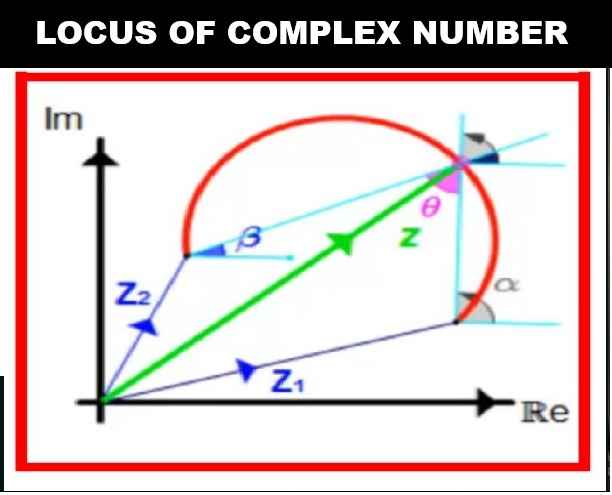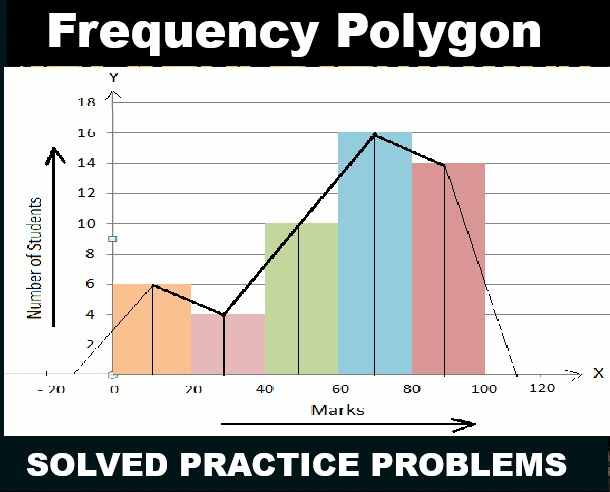Water Goyal Brother Solutions ICSE Class-9 Chemistry Ch-3. We Provide Solutions of all type exercise questions such as reactions, definition fill in the blanks give reason etc. Visit official Website CISCE for detail information about ICSE Board Class-9.
Ch-3 Water Goyal Brother Solutions ICSE Class-9 Chemistry
| Board | ICSE |
| Publications | Goyal Brother Prakashan |
| Subject | Chemistry |
| Class | 9th |
| Writer | Dr. S.K. Aggarwal |
| Chapter-3 | Water |
| Topics | Solutions of Exercises |
| Edition | for 2022-2023 Academic Session |
Ch-3 Water Goyal Brother Prakashan
ICSE Class-9 Chemistry Solutions
(Page- 75-76)
Questions 1. State five important physical properties of water.
Answer : physical properties of water.
- Density.
- Melting point.
- Boiling point.
- Hardness.
- Electrical conductivity.
Questions 2.
(a) Prove by an experiment that tap water contains dissolved impurities-
Ans- Take a small quantity of tap water glass on a beaker filled with water when the watch glass is seen in light a number of concentric rings of solid matter are seen. These are deposited of deposits of dissolved salt left after evaporation of tap water
(b) what Is the importance of dissolved impurities in water?
Ans–The dissolved impurities in water are salts and minerals. Dissolved salts provide specific taste to water. Salts and minerals are essential for growth and development. They supply the essential minerals needed by our body.
Questions 3.
(a) Prove experimentally that tap water contains dissolved air.
Ans:–Take some water in a glass or metal container like pan and heat it. Just before water begins to boil, you will notice some bubbles at the inner surface of the pan. These bubbles come from the air dissolved in water. This shows that air is dissolved in water
(b) Compare the composition of nitrogen and oxygen in boiled of air from water with the ordinary air
Ans: In boiled off air the concentration of nitrogen and oxygen will be less as compared to ordinary air
Questions 4.
(a) How does the solubility of air in water change with (i) increase in temperature (ii) increase in pressure?
Ans:- (i) Increase (ii) Increase
(b) why does a lot of effervescence take place when a soda water bottle is opened?
Ans The liquid in the soda bottle is under high pressure. When you open the bottle, the dissolved carbon dioxide is depressurized and wants to rapidly expand. Thus effervescence is seen when a bottle of soda is opened.
Questions 5.
(a) What do you understand by water of crystallization?
Ans:- the number of water molecules that combine chemically in definite molecular proportion, with the concerned salt in the crystalline state. This water is responsible for the geometric shape and colour of the crystal
(b) How would you show that copper sulphate crystals contain water of crystallisation?
Ans when it comes in contact with water it forms CuSO4. 5H2Owhich is blue in colour. thus when anhydrous CuSO4 is put in a liquid containing moisture it will turn blue. This is how anhydrous CuSO4 is used to detect moisture(water
Questions 6. Define the following terms with examples:
(a) Hydrated substances-– Hydrated substances are compounds containing water in the form of H2O molecules, usually, but not always, with a definite content of water by weight. The best-known hydrates are crystalline solids that lose their fundamental structures upon removal of the bound water.
(b) Anhydrous substances–The word anhydrous stands for without water. Compounds without water or compound that do not contain water are called anhydrous compounds.
Questions 7. Define the following properties of the substances properly:
(a) Efflorescence— Efflorescence is the loss of water (or a solvent) of crystallization from a hydrated or solvated salt to the atmosphere on exposure to air.
(b) Deliquescence—the process by which a substance absorbs moisture from the atmosphere until it dissolves in the absorbed water and forms a solution.
(c) Hygroscopy–the phenomenon of attracting and holding water molecules via either absorption or adsorption from the surrounding environment,
Questions 8.
(a) Define the following terms
(i) Soft water–water that is free from dissolved salts of such metals as calcium, iron, or magnesium, which form insoluble deposits such as appear as scale in boilers or soap curds in bathtubs and laundry equipment
(ii) Hard water–Hard water is water that has high mineral content (in contrast with “soft water”). Hard water is formed when water percolates through deposits of limestone
(b) Describe the removal of hardness of water by
(i) Boiling--boiling the water causes the precipitation of solid calcium carbonate or solid magnesium carbonate. This removes the calcium ions or magnesium ions from the water, and so removes the temporary hardness
(ii) Addition of washing soda--Permanent hardness of water is due to dissolved salts of chlorides and sulphates of calcium and magnesium which can be removed by adding sodium carbonate (Na2CO3) (washing soda or soda ash) which reacts with these dissolved salts to form insoluble carbonates that can be removed by filtration and then water becomes soft
Questions 9. What do you understand by the following terms?
(a) solution–A solution is a homogeneous mixture of one or more solutes dissolved in a solvent.
(b) solute–the substance that dissolves in a solvent to produce a homogeneous mixture.
(c) solvent–solvent: the substance in which a solute dissolves to produce a homogeneous mixture.
Questions 10. What do you understand by the following terms?
(a) saturated solution: A saturated solution is a solution that contains the maximum amount of solute that can be dissolved under the condition at which the solution exists.
(b) unsaturated solution: solutions in which the amount of dissolved solute is less than the saturation point of the solvent
(c) super-saturated solution: solution that contains more than the average solvent that can be dissolved at a given temperature.
Ch-3 Water Goyal Brother Solutions ICSE Class-9 Chemistry
Questions 11.
(a) Why is temperature always mentioned with saturated solution?
(b) State two ways, by which a saturated solution can be changed to unsaturated solution.
Answer :
(a) The solubility of a solid in a solution increases with increasing temperature. If the temperature of a saturated solution is increased, the solution will become unsaturated. Thus, the temperature plays an important role in specifying whether a solution is saturated or not.
(b) two ways, by which a saturated solution can be changed to unsaturated solution.
- On heating, a saturated solution becomes unsaturated and more solute can be dissolved in the solution.
- By adding more solvent, a saturated solution can be made unsaturated.
Questions 12. How can you distinguish between saturated solution and unsaturated solution?
Answer : A saturated solution is a solution that contains the maximum amount of solute that is capable of dissolving. An unsaturated solution is a solution that contains less than the maximum amount of solute that is capable of being dissolved.
Questions 13.
(a) What do you understand by the statement, that the “solubility of copper sulphate 14.3 g/100 g of water at 0ºC?
(b) State three factors which determine the solubility of a solid.
Answer :
(a) It means 14.3 gm of solute can be dissolve in 100 gm of water at 0ºC
(b) three factors which determine the solubility
The size of solute particles, stirring, and temperature, are the three factors that affect the solubility of a solid solute in a solvent
Questions 14. Explain how you will determine solubility of NaNO3 at room temperature.
Answer : Divide the mass of the compound by the mass of the solvent and then multiply by 100 g to calculate the solubility in g/100g
Questions 15. Name two substances whose solubility
(a) increases with the rise in temperature.– KCl
(b) remains practically unaffected with the rise in temperature–Sodium chloride(NaCl)
(c) decreases with the rise in temperature–alcium hydroxide(Ca(OH)2) Calcium sulfate(CaSO4)
Questions 16.
(a) What are solubility curves?
(b) State two applications of solubility curves.
Answer :
(a) a graphic representation of the variation with changing temperature of the solubility of a given substance in a given solvent.
(b) It gives an idea about the ability of a solute to dissolve in water at different temperature. 2. The solubility of a solute at any temperature can be measured
Questions 17. Write balanced equations and stale experimental conditions when
(a) Sodium reacts with water– 2Na+2H2O→2NaOH+H2.
(b) Calcium reacts with water.–Ca+2H2O→Ca(OH)2+H2↑
(c) Magnesium reacts with water–Mg + 2H2O → Mg(OH)2 + H2,
(d) Iron reacts with water.–3Fe(s) + 4H2O(g) → Fe3O4(s) + 4 H2(g) Fe3O4
Questions 18. Describe all what you will observe when a piece of sodium is dropped into water.
Answer : When a piece of sodium metal dropped in cold water we observe: Sodium floats on water surface melts forming a silvery globule which darts about the surface of water catches fire and burns with golden yellow flame. Bubbles of hydrogen evolve and solution is soapy, slightly warm (alkaline) hence turns red litmus blue.
Questions 19. Describe all what you will observe when a picce of calcium is dropped into water.
Answer : When calcium reacts with water, it forms calcium hydroxide and hydrogen gas. Due to the formation of hydrogen bubbles that stick to the surface of calcium, it starts floating on water.
Ca(s) + 2H2O(l) → Ca(OH)2(aq) + H2(g)
Questions 20. What percentage of total water is available in (a) oceans (b) glaciers and ice caps (c) in streams and rivers on the planet Earth?
Answer :
(a) oceans–oceans hold about 96.5 percent of all Earth’s water
(b) glaciers and ice caps– About 2.1% of all of Earth’s water is frozen in glaciers
(c) in streams and rivers — only 0.3% left for lakes, rivers, streams, and swamps.
Ch-3 Water Goyal Brother Solutions ICSE Class-9 Chemistry
Questions 21. Name the single-celled organism from which life started on the Earth.
Answer : Cyanobacteria, also known as blue-green algae, started out on Earth quite a while ago. Possible fossil examples have been found in rocks that are around 3500 million years old
Questions 22. Where do the maximum number of plants and animals live on the Earth and why?
Answer : It has been estimated that the total number of species of plants and animals living today varies 5 million, but only 1.8 million species have so far been described. Of the total known biodiversity, about 0.5 million species represent plants and the remaining species contribute animals.
Questions 23. Briefly describe how fresh water cycles in nature.
Answer : It is a complex system that includes many different processes. Liquid water evaporates into water vapor, condenses to form clouds, and precipitates back to earth in the form of rain and snow. Water in different phases moves through the atmosphere (transportation)
Questions 24. Define (a) water pollution, (b) water pollutants.
Answer :
(a) water pollution–Water pollution is the contamination of water sources by substances which make the water unusable for drinking, cooking, cleaning, swimming, and other activities.
(b) Pollutants include chemicals, trash, bacteria, and parasites. All forms of pollution eventually make their way to water
Questions 25. How does water gets polluted by the household waste?
Answer : Domestic water pollution is produced by the discharge of domestic sludge containing organic substances and soaps. These substances generally pour into superficial river flows but sometimes reach aquifers. It’s possible to reduce waste water pollution thanks to purification.
Questions 26. Describe briefly how modern agricultural activities lead to water pollution.
Answer : Most of the farming activities are responsible for water pollution due to excessive use of pesticides and chemical fertilizers, which ultimately leaches in groundwater and drains into surface water bodies—the change in Physio-chemical properties of water due to agricultural activities detriment the aquatic ecosystem
Questions 27. How does dumping of waste oil from sea vessels leads to sea water pollution?
Answer : dumping of garbage and other waste materials stands first in the list. Dumping involves depositing all the waste materials from factories and industries, tankers and ships and sewerage waste materials into the oceans and seas.
Questions 28. State three major problems caused by water pollution to mankind and environment.
Answer : water pollution causes diarrhea, skin diseases, malnutrition, and even cancer and other diseases related to water pollution
Questions 29. Suggest four ways for checking water pollution.
Answer : Check water pollution by CDOM Monitoring, Chlorophyll Fluorescence Analysis, Measuring the Dissolved Oxygen Levels, and also by pH
— End of Water Goyal Brother Solutions ICSE Class-9 Chemistry Ch-3 :–
Return to: ICSE Class-9 Chemistry Goyal Brothers Prakashan Solutions
Thanks


